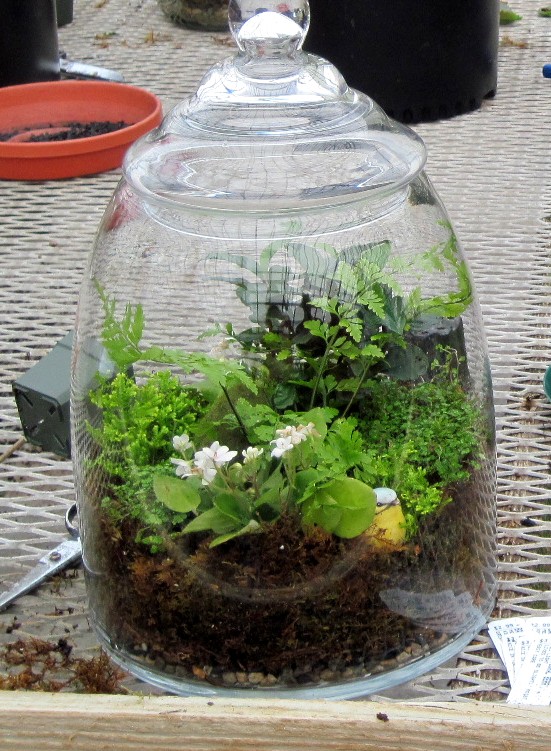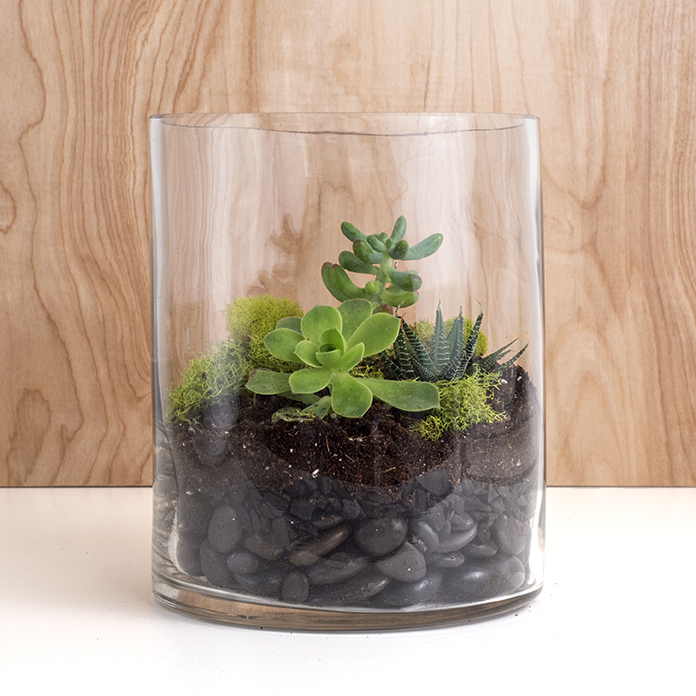See This Report about Terrarium Guides
Wiki Article
What Does Terrarium Guides Do?
Table of ContentsWhat Does Terrarium Guides Do?The Basic Principles Of Terrarium Guides Excitement About Terrarium GuidesTerrarium Guides Fundamentals ExplainedTerrarium Guides - The Facts
Planning a terrarium, The primary step in preparing a terrarium is to choose whether it will certainly be open (no lid or cover) or shut. Shut terrariums maintain one of the most humidity, complied with by open terrariums and after that dish gardens. Open up terrariums and meal yards require even more constant watering than do closed, however threat of condition accumulation is greater in the latter due to the fact that of higher humidity.Containers with huge openings without covers can be utilized yet will certainly require more regular watering to keep the high moisture needed by some plants. Open terrariums are drier and also much less subject to disease.
A packaged peat-lite mix (blend of peat moss, vermiculite and perlite) is an exceptional selection. Potting dirts cost yard centers and also baby rooms where plant materials are sold are sanitized and prepared for usage. Growing medium additionally can be prepared in your home. Mix one component peat moss with one component abundant garden dirt.
Select plants that suit the location. Numerous plants are appropriate for expanding in terrariums.
Fascination About Terrarium Guides
Ideally, a terrarium should be placed within a number of feet of an intense window but not in straight sunlight. Few plants endure low-light problems for extended periods. For plants detailed as low light in Table 1, a place no greater than regarding 10 feet from an intense window need to be sufficient. Terrarium plants requiring brilliant light should lie near to a home window, commonly in straight sunlight.Do not place closed containers in full sunlight. A true terrarium is tightly closed, as was Dr. Ward's initial situation. Lots of plants matched for terrariums call for high humidity. Plants that choose this condition are provided in Table 1 as shut. An open container is one with high sides, usually a minimum of as tall as the plants included.
Plants not needing high moisture can be utilized - terrarium guides. Dish describes a container with sides that are less than the plants, to make sure that the entire growing goes through normal problems in the area. Plants enduring low moisture are most suitable for this sort of planting. Numerous terrarium plants are tropical in nature and well fit for regular house temperature levels.
The amazing designation primarily fits woodland plants in timberland terrariums. These plants must have night temperatures of regarding 50 to 55 degrees F. Locations with these temperature levels may be difficult to locate in the home, yet in the wintertime, when plants are positioned on a windowsill close to the glass with the drapes drew behind them, a pocket of awesome air will certainly establish.
Terrarium Guides Fundamentals Explained
Usage to dig holes, step things and support plants while they are being grown. Usage to prune plants prior to planting them.Mapping out a layout of the terrarium before actually assembling it can be helpful. Before planting, clean and disinfect redirected here the inside of the container by cleaning it with warm, soapy water and rinsing completely.
If a business glass cleanser is used, enable the open container to air for a number of days prior to growing. Generally, regarding one quarter of the terrarium's quantity ought to be used by the growing tool and drain product. These can be included conveniently with a spoon, channel or other convenient tool.
If any kind of conditions exist, they usually will end up being visible on the vegetation or stems. Prior to including the plants, organize them in an open area regarding the size of the container to obtain a suggestion of loved one dimensions and textural patterns. A reduced, coarse-textured plant is often preferable for a leading focal point near the front.
The Only Guide to Terrarium Guides
In a closed container, attempt to maintain vegetation from touching the sides of the container. Leaves touching the glass will collect water and be even more subject to degeneration. Plants may be put in deep terrariums making use of long slim tongs or a stick with a cable loophole on the end. Deep containers with little openings will certainly go to website require considerable perseverance and practice in planting.When the plant is the container, unpack it and also eliminate the paper. Prior to inserting the plants, dig holes in the expanding medium with a sharp stick.

Root deteriorates commonly are linked with way too much wetness. If rots create in a closed terrarium, eliminate the cover to permit more drying out. If a fungi seems to be spreading out from a plant with the expanding medium, it may be helpful to remove a section of the medium in the contaminated area and also replace it.
The 4-Minute Rule for Terrarium Guides
Most of the times, after a few weeks the terrarium is developed and also the threat of disease is reduced. Continue to expect fallen leaves, however, or any plant parts that start to decay - terrarium guides. Care of the terrarium, A shut terrarium usually will not need water for 4 to 6 months.
Due to the fact that plants in terrariums need to not expand rapidly, terrariums seldom require fertilizer. Do not fertilize for at the very least a year after published here planting. If after the first year the plants appear yellowish and also appear to do not have vigor without any type of various other evident troubles, a light fertilizing might be needed. Make use of a water-soluble houseplant fertilizer at regarding quarter the rate advised for regular houseplants.

Report this wiki page